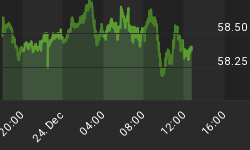The S&P 500 index is quickly approaching its key resistance line at approximately 1600. This line corresponds to the index's high from the last 13 years, and its resistance was tested with no success in both 2000 and 2008. Will this time be different for stocks?
Will Fed's tone change?
After rising 2.1% in the last quarter of 2012, household consumption appears to be gaining momentum in the U.S. Retail sales have been strong and rose 1.1% from January to February. This consumption boom was broad-based and included automobiles and gasoline. However, inflation stayed mild at 1.9%. Unemployment is expected to decline toward 7.0% by the end of 2013. In March, unemployment benefits fell to the lowest level in the last six years. Finally, the housing market is bottoming out and should increase in the coming months. Stock prices should stay supported for now. The S&P 500 index could reach 1550-1600. According to the seasonal analysis, March, April, and May are among the best months of the year. So, what will happen next?
Challenges lie ahead. Congress has been asked to renew the law to fund the federal government on March 27. Federal employees will not be paid if a solution is not found. Next week, the Federal Reserve will meet again. The monetary policy should remain unchanged, and the third phase of quantitative easing, buying $40 billion of mortgage-backed securities and $45 billion of long-term treasury bonds, should be confirmed. Nonetheless, in January, few FOMC members asked to reduce the quantity of securities used, and president Bernanke is expected to explain when this phase will be instituted.
Stocks near key resistance line
Across the Atlantic, Italy has not yet formed a government yet. Mr. Grillo, the leader of the populist Five Star movement, does not believe in the eurozone. A compromise with the center-left coalition of Mr. Bersani is still possible, but any delay can affect the still fragile recovery in the whole continent. This time, as the S&P 500 index approaches its resistance line, how stocks will react is unknown. Since 1900, the Dow Jones Industrial (DJI) has topped three times (1929, 1965, and 2000). Periods of consolidation continued for 13 to 17 years from top to bottom (1906-1921, 1929-1942, and 1965-1982). The current bear market started in 2000, and Mr. Bernanke has said many times that the unemployment rate must decline way below 7% to provide lasting economic growth. So, are we out of the woods, or are we only close to it?
The labor market is improving, but a new increase in unemployment is possible. Since 1948, the U.S. unemployment rate had two bullish cycles (1952-61 and 1969-1982). Increases lasted for 9 to 13 years and extended to 63%/67% top/bottom. The unemployment rate climbed in three distinct waves before collapsing. Corrections, within the bull trend, continued for two (1958-1960) years and four (1975-1979) years prior to the final upward movement. So, how would past history fit in today's scenario? Unemployment began in 2000. It topped in 2003, bottomed in 2007 and completed the second wave in 2009. The movement extended 60% from the top to the bottom. A third and final wave up has yet to occur, and this wave could be expected to happen between 2013 and 2014 and could last one to three years, if history repeats its course.
















